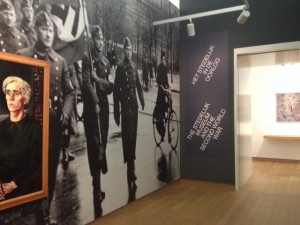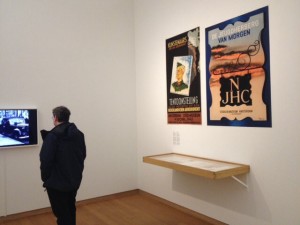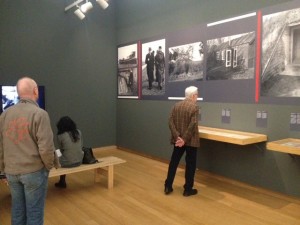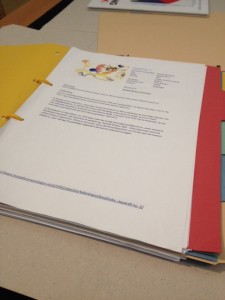The Stedelijk Museum and the Second World War – Stedelijk Museum, Amsterdam


I wonder whether the Stedelijk felt themselves particularly equipped to confront their wartime history because they seem to have very little to reproach themselves with? Before the war reached the Netherlands, the museum’s curator and director seem to have attempted to help émigré dealers and one artists through commissions and purchases. A Jewish employee was dismissed only under protest. Director Willem Sandberg, having seen the cost to culture of the civil war in Spain firsthand, built a bunker in sand dunes far from the city in which the Stedelijk, other museums, and private collectors, protected their treasures from destruction. While the museum was coerced into holding two propaganda exhibitions, their acts of resistance included printing words offensive to their German occupiers on posters, supporting non-registered artists by allowing them to work on other exhibitions, and filling their exhibition spaces with previously despised local artist groups so that there was less space for Nazi propaganda. Sandberg even plotted against the occupiers and had to go into hiding, saved by the fact that his sand dune bunker had a phone line his wife could use after men turned up at their house in search of him. In short, unless there are other stories which have not come to light, it seems the Stedelijk has very little to hide, presumably in contrast to many other institutions.

It seems the impetus for this exhibition may have been a government mandated survey of Dutch museums, finished in 2013, which focused not just on wartime acquisitions (as had a previous survey) but on the ownership and provenance of all artworks created before the end of the war, with a particular focus in suspicious gaps around the time of the occupation. This is a worthy endeavour, made even worthier by efforts to digitise the results and make them available in English as well as Dutch to allow some of the gaps to be filled and matches to be made. Certainly the Stedelijk does not shy away from the findings, but reproduces the provenance research files for a number of works in its collection within the exhibition, making available additional resources as well. And it is not merely minor works or unimportant sketches which are implicated, but major ones as well, such as an Odalisque by Matisse which is a major drawcard within the collection.

Again, however, it may be because the museum’s wartime record is so seemingly squeaky clean that they feel able to engage so openly with these items of dubious title. It seems that a number of works and collections were ‘donated’ to the museum during the Occupation in an attempt to keep them safe from just the kind of forced sales and open looting seen elsewhere. The trouble is that the records naturally had to conceal the true nature of the works’ incorporation into the collection, which, along with the deaths and displacements of the Second World War, has made subsequent unravellings a Herculean task. I am pleased to see such an open and informative dialogue about museum title and wartime movement of property, though, even if the circumstances are not quite as complex or as fraught as can sometimes be the case.
There were other things in the exhibition which I also found to be interesting, for example the colour coding system still in evidence on the frames of some works, which marked them out in terms of how replaceable they were if the worst were to happen, and the artistic response to some of the goings on, including Sandberg’s bunker as the subject of a series of hopeful works. I hope that the exhibition will serve as inspiration to other institutions both in the Netherlands and elsewhere who wish to engage the public in the long and complex process of provenance research in the context of war and displacement. A lighthearted subject for an exhibition it certainly is not, but definitely a worthy one.
